Key Points:
- It is necessary to properly identify the terminals of the transformer as well as the input and output.
- The terminals have to be wired accordingly in order for the transformer to work properly.
- It is strictly advised to wear safety gear such as rubber boots and gloves to avoid any sort of electrical hazards.
In a household, there can be a power supply of many different voltages and ratings according to the specification of the house and region. Similarly, devices of varying caliber often require different power supplies to work properly.
In order to use a higher voltage power supply, to run any electrical device (fans, lights, blenders etc.) we need to first lower the voltage of the supply. This can be done with a step down transformer. There are several steps you need to follow for knowing how to wire a transformer 480v to 120v.
There are a few steps to properly wiring up a transformer. They are as follows, gathering necessary equipment, turning off the power, identifying the terminals on the switch, connecting the wires to the transformer and troubleshooting.
In this article, I’ll go through each stage in depth to ensure that you have a complete grasp of the process. So, let’s get started.
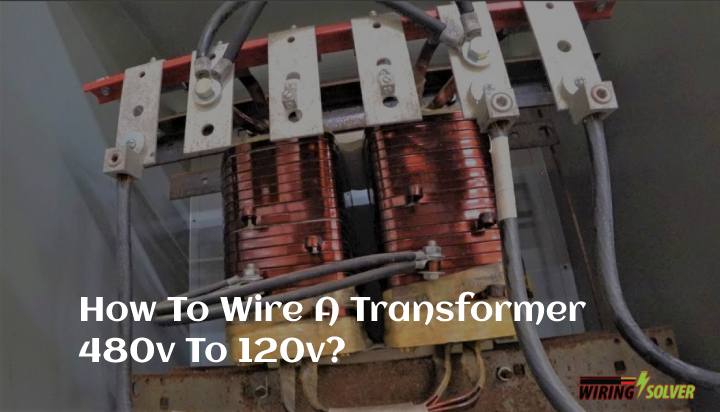
How To Wire A Transformer 480v To 120v?
There are a few steps to properly wiring up a transformer. They are:
1. Gathering Necessary Tools and Equipment
Before proceeding with the steps of the installation, there are certain tools that you have to acquire to finish the task properly as well as ensuring your safety.
You must always wear safety gear before working with any electrical components. Even with tasks such as figuring out how to connect generator to house and others, you must wear safety gloves, boots and goggles along with tools necessary to complete the process.
Which equipment do I need?
- First of all, you need to acquire rubber boots and gloves. This helps you from any accidental contact with live wires.
- You might need goggles to protect your eyes in case of sparks or feedback.
- Voltmeter to check the voltage of the wires, if they are accurately supplying the preferred voltage as well as checking if the power has been turned off properly.
- You can either use contact voltmeters or non-contact voltage testers which provide ample safety.
- You must also acquire a proper step down transformer which converts 480V to 120V.
2. Turning Off the Power
Before proceeding with the wiring of the transformer, you must turn the power off from the main panel of your household. It is a must step for any sort of electrical installation. If you are trying to figure out how to connect fan regulator to the switchboard or how to convert 3 phase to single phase 220v,you have to turn of the power.
How to turn off the power?
- Locate your household’s main breaker as well as the breaker that delivers electricity to the wires you’re going to operate on.
- After you’ve determined which breaker is the proper one, flip the switch.
- Check the wiring of the power supply with an appropriate equipment to ensure that the electricity has stopped flowing.
- You can use tools like an ammeter or a voltmeter to see if power is still flowing after the breaker has been turned off.
- To properly protect yourself from any electrical risks or mishaps, use rubber boots and gloves.
3. Identifying the Wires of the Transformer
It is crucial to properly identify the terminals on a transformer in order to know how to wire a transformer 480v to 120v. Because to properly wire the transformer, you must know, which wire you should connect to which terminal.
Proper identification of the terminals is a must step even for 480V 3 phase to 120V single phase transformer as well.
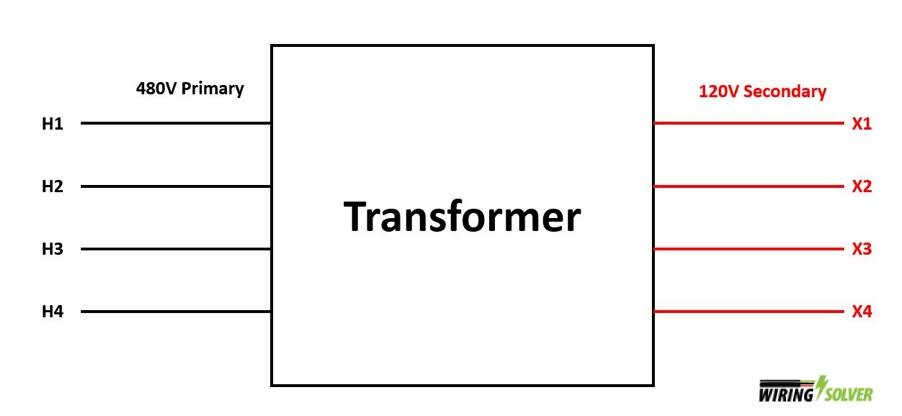
How to Identify the Wires on a Transformer?
- There are two man sections of a transformer. The primary and the secondary.
- The primary is the input, and the secondary is the output.
- The most common layout is given on the diagram above (Fig-1).
- The wires labeled H1, H2, H3 and H4 are the primary. They are most commonly color coded in black. This can be simplified if taken note of as the input.
- The wires labeled X1, X2, X3 and X4 are the secondary. They are most commonly color coded in red. This can be simply called the output of the transformer.
- Your 480 Volts voltage supply has to be connected to the primary.
- 120 Volts will be supplied through the secondary of the transformer.
- But to derive the appropriate conversion, we will need to wire it appropriately.
4. Connecting the Wires
In order for the transformer to work properly, you have to complete the wire connections accurately. Wire connection is a crucial step. Any mistakes in this step can cause major accidents and electrical hazards that might result in fires or the damage of your electrical components.
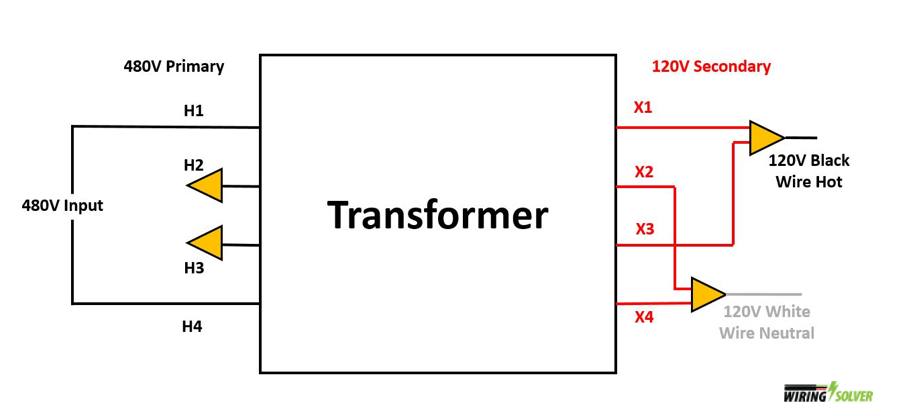
Wiring a Transformer
- Locate the H2 and H3 wires.
- Cover them up individually with a wire cap or electrical tape properly.
- H1 and H2 will be your 480 Volts input. Wire these up with the power supply.
- On the secondary, locate the X2 and X4 wires. Tie them up together with a wire cap or electrical tape.
- This will be the 120 Volts white wire neutral of your transformer. You can connect it to the neutral of your device to power it up.
- The X1 and X3 will have to be connected together. This will act as the 120 Volts black wire hot of the transformer.
- Hook this up with the hot terminal of your device that you wish to power.
However, before connecting the transformer, please refer to the specific transformer brand and model that you are using. Because, the primary and secondary of the transformer can vary according to the model. The color code can also be different.
I have chosen to follow the most commonly found configuration for this article.
5. Troubleshooting
It’s critical to troubleshoot any electrical component once it’s been installed to ensure it is operating properly.
Testing the transformer output
- Use a voltmeter to check the output voltage of the transformer.
- If the output voltage is 120 Volts, then the installation has been completed properly.
- However, if the output voltage is not 120 Volts, kindly turn off the power and recheck the wiring according to the diagram (Fig-2) shown in the article.
Summary
Throughout this article, I have discussed all of the steps necessary to know how to wire a transformer 480v to 120v. The processes have been broken out in depth so that you may do this activity on your own.
However, like with any electrical job, you should proceed with utmost caution and take all appropriate safety precautions before beginning. To make the installation procedure easier and more precise, use suitable rubber gloves and boots, as well as the essential equipment. As a result of poor wiring, major accidents and electrical risks might occur.


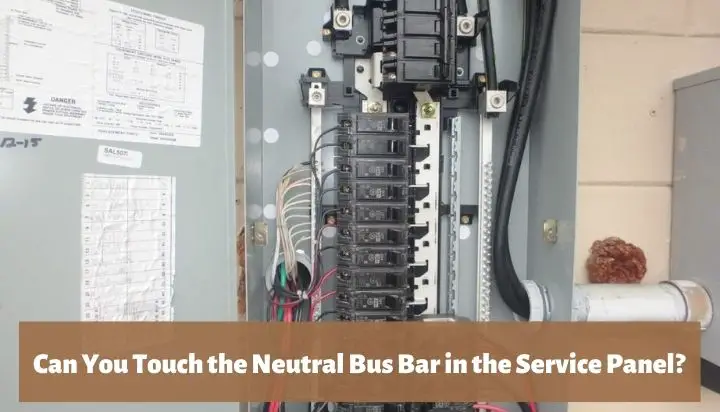
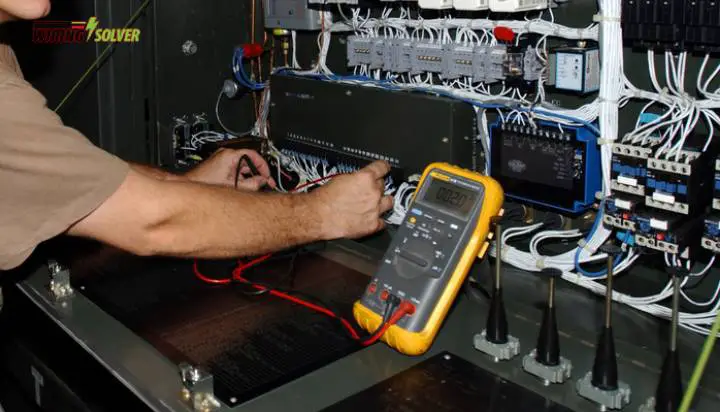
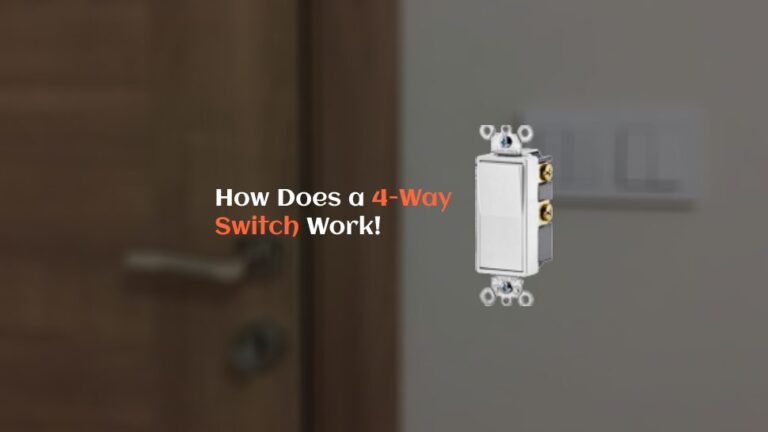
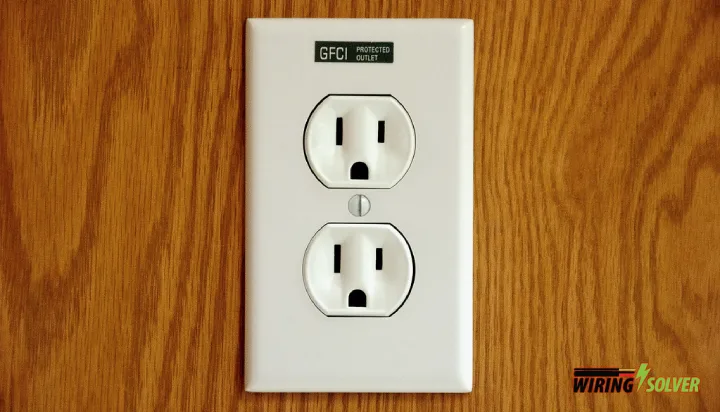
![How Does An Electric Doorbell Work? [Explained]](https://wiringsolver.com/wp-content/uploads/2022/06/How-Does-An-Electric-Doorbell-Work.jpeg)